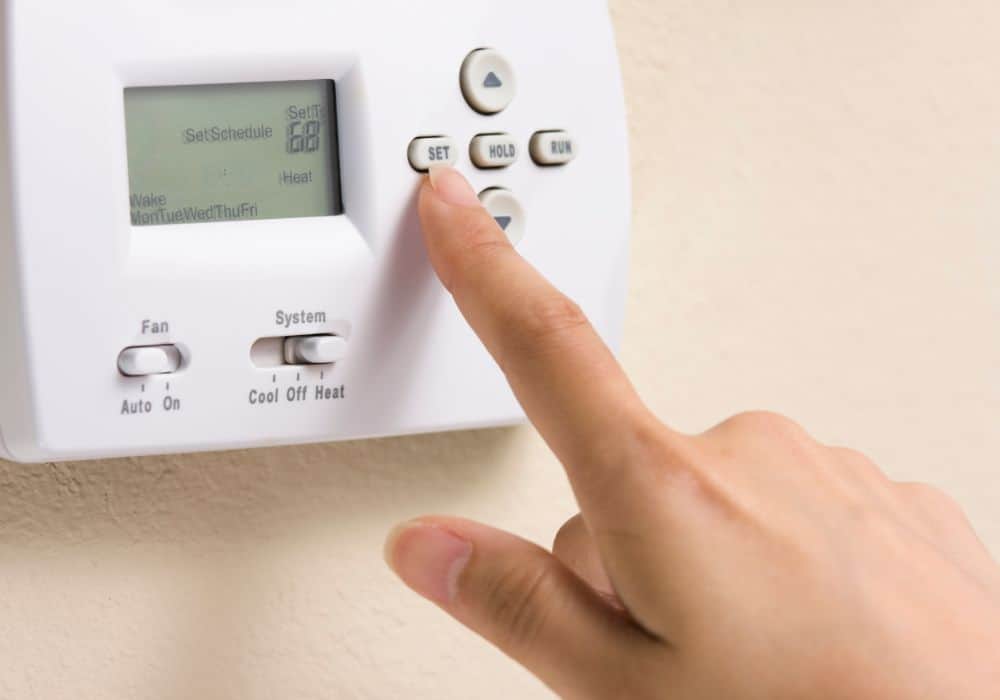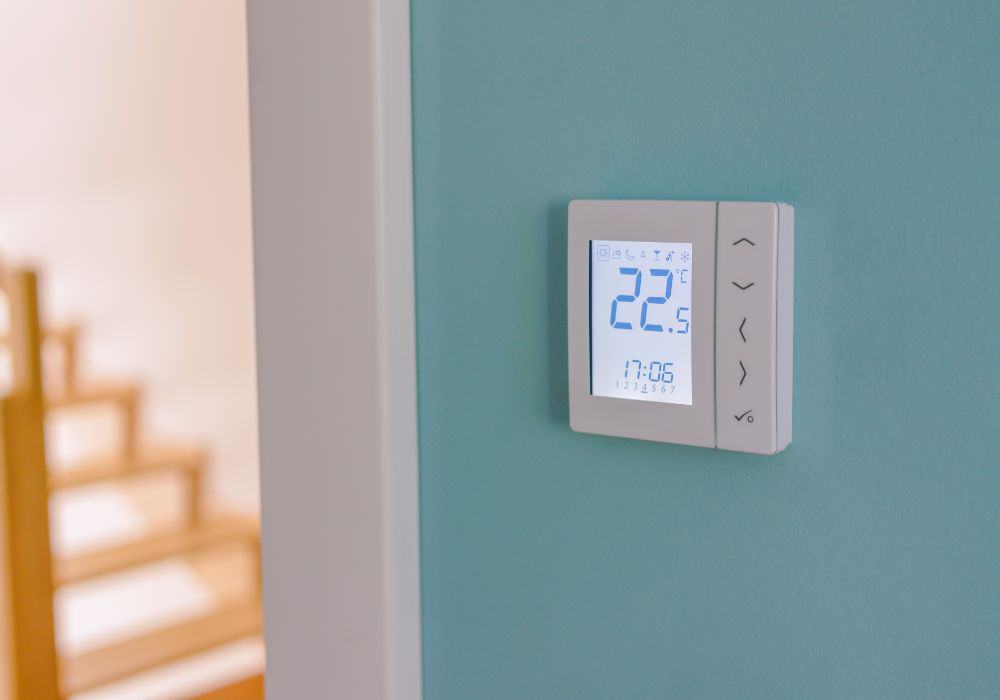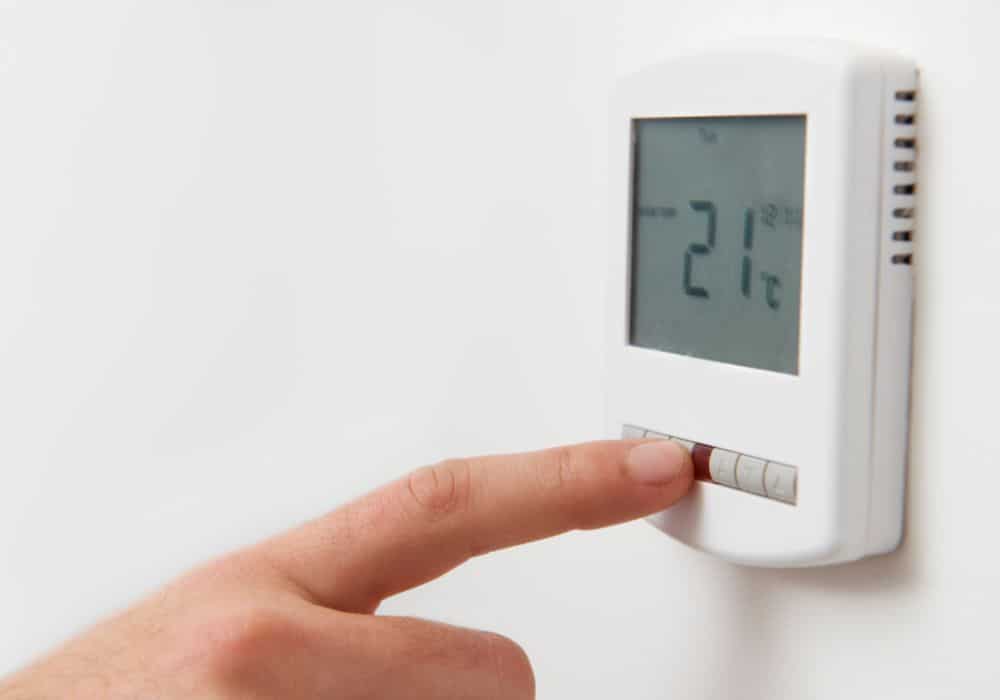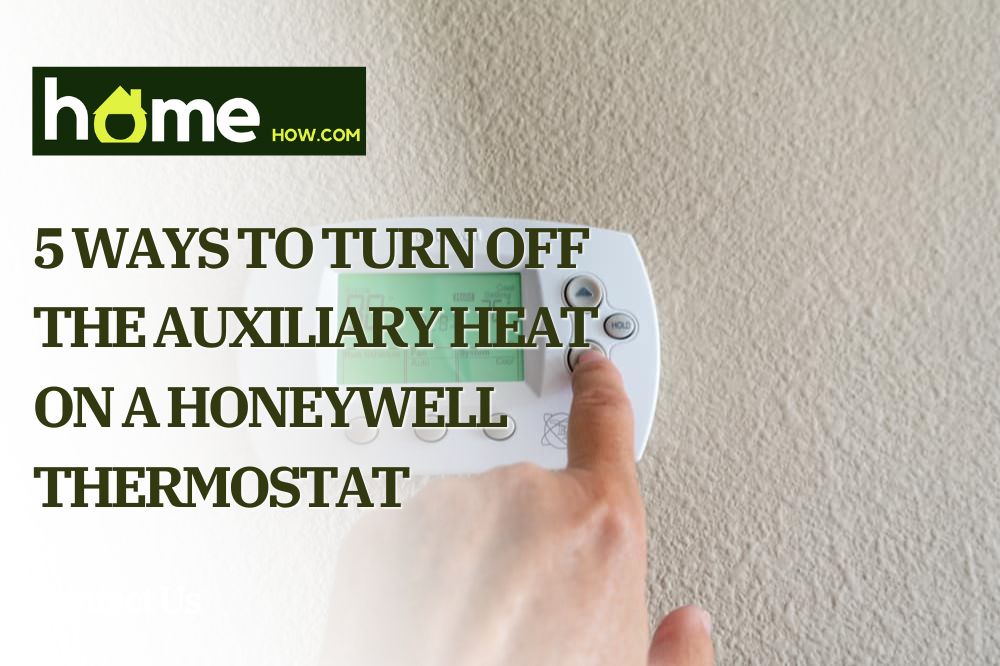Are you wondering how to turn off the auxiliary heat on a Honeywell thermostat? Then it’s important to understand what that means because you may be new to thermostats.
Auxiliary heat is the secondary source of heat. A thermostat operates on two heat sources: primary and auxiliary heat.
A Honeywell thermostat is the most efficient temperature regulation control unit. These units tend to use auxiliary heat. Many homeowners have noted an auxiliary heat on their unit and wondered why it’s there. Note that running a Honeywell thermostat on auxiliary heat is expensive. That’s why knowing how to turn off the aux heat on your Honeywell thermostat is important.
When Should Your Aux Heat Stay On?
Aux heat isn’t that bad. There are conditions when having an aux heat on is a good thing. For instance, when the exterior temp drops below the freezing point, it’s OK to have the aux heat on. That’s because the outdoor heat pump will require support to heat your home. Maybe your heat pump or other primary heat source is in defrost mode. So, that’s the best time to have an aux heat as a backup.
Another scenario is when you let the thermostat temp drop while sleeping. It would help if you bumped it up three degrees, as this will make the furnace heat quickly once you wake up. So, the auxiliary heat will meet these demands. Additionally, if the interior temp stays constant for up to 15 minutes, the aux might sense that the heating unit isn’t working well, so it might act as a backup.
However, if you notice the auxiliary heat is on without the need, turning it off is essential since it’s malfunctioning.
How to Turn Off The Auxiliary Heat On A Honeywell Thermostat

Why is switching off the AUX heat necessary? If an appliance you set works well and is a perfect substitute for the main heating unit, why should you stop it?
Irrespective of how fast and useful the auxiliary unit is, it’s costly. So, if you aren’t ready for a high electricity bill, turn off that thing. Here’s how to do it.
1. Keep the House Temperature Low
When you buy a new Honeywell thermostat, there’s a certain temp that you’ll need to set as the house temp. If you bring this temp to 68-70 degrees, the aux heat won’t turn on. That’s one of the parts of your thermostat’s programming.
While this will make the house colder, you can compensate for this by putting on warm clothes. It’s the electricity bill you want to reduce, so anything else can go.
2. Make the House Warmer
Generating a warmer atmosphere in your home is vital. This prevents the aux heat from stepping in. Add wall insulation to warm it up, and open the windows to allow natural light to get in. You can also switch on electrical devices designed to generate heat whenever in use. The over-and-dry helps when you want to warm your house.
3. Keep Away From the Emergency Heat Setting
Many homeowners don’t know the difference between auxiliary and emergency heat. Emergency heat acts as the contingency plan whenever the heat pumps don’t work well.
Auxiliary heat tends to work with heat stripes and heat pumps, while emergency heat is designed to work with heat stripes alone. Setting emergency heating can make the aux heat come on. Therefore, avoid it if you can.
4. Close Unused Areas
Many homeowners have extra rooms in their houses that aren’t used regularly. Shut off the doors and close the vents in those rooms. This allows the remaining warmer air to get to the other parts of the house.
5. Set Seasonal Heating Tune-up
Before the winter season kicks in, it’s good to get a professional who can inspect the heating unit and have it tuned up. Early fall is the best time to ensure that all moving parts in your appliances are in good working condition. You can change the air filters and determine the heating system doesn’t need major repairs.
How Long Should You Keep Your Auxiliary Heat On?

The AUX heat will only turn on when the house needs to warm faster. It will stay on until the house attains your Honeywell thermostat’s temperature. This ought to take no more than 30 minutes. However, if you see any of these issues below, call a pro for professional help. The expert will inspect to determine the cause of the malfunction.
- The auxiliary heat stays on for over 30 min
- The auxiliary heat turns on any time you switch on the system
- The auxiliary heat stays on an entire day without switching it off
Aux heating isn’t necessary when the external temp exceeds 40 degrees. That is because, above that level, heat pumps can warm the house independently. So, if the auxiliary heat turns on above 40 degrees, your system might be having an issue.
- Pay attention to how often and when your Honeywell thermostat reads with aux settings. In some cases, you might notice that the aux heat turns on whenever the furnace runs.
- If your heat pump shifts to defrost mode, you’ll need to use the aux heat.
- The aux heat will kick in if the thermostat demands a 3-degree temp increase.
When the aux heating is constantly running, and none of the above situations apply, it might be time for troubleshooting. It’s clear that the aux heat might be malfunctioning and could need professional assistance.
What Causes Aux Heat To Stay On?

When the Honeywell thermostat isn’t functioning well, the aux heat might stay on longer than it’s required. Here are the main issues that could cause this:
1. Insufficient Refrigerant
Heating units require a steady supply of refrigerant to distribute heat throughout the home. When the refrigerant reduces, the heat pump will become ineffective at warming up your house. The heating units are designed so that such doesn’t happen. If your Honeywell thermostat has insufficient refrigerant, it might be caused by a leak.
2. Problem With the Condenser Fan Motor
The condenser motor plays a vital role in the HVAC unit’s airflow. So, the system will become less efficient if the condenser is faulty. If that happens, the heat pump will rely on AUX heat. For that reason, cleaning or replacing the condenser fan motor can solve the issue.
3. Damaged Compressor
A damaged compressor can make the aux heat stay on. This component is important to the heating unit’s ability to distribute heat. So, if it’s faulty, the thermostat will have to depend on AUX heat to warm up your house.
4. Issues With Defrost Control Panel
Auxiliary heating turns on whenever the heating unit runs on defrost mode. A defrost control panel monitors this setting. If the panel isn’t functioning well, it might trigger the auxiliary heat to turn on.
Furthermore, a faulty defrost control panel can allow frost accumulation on the condenser. This impairs the effectiveness of the heat pump, making the aux heat stay on.
5. Damaged Reversing Valve
The reversing valve alters the refrigerant’s direction in the heating system. This is what allows the system to heat the house. If it’s broken, it can force cold air out of the vents, triggering the aux heat to turn on.
Honeywell Thermostat Always on Auxiliary Heat Setting
Some homeowners find their Honeywell thermostat is fixed on the auxiliary heat in the middle or end of winter. That’s because their heating unit can’t keep up with the house’s required demand. Since this is a severe problem, you might need a professional to inspect it.
If the auxiliary heat on a Honeywell thermostat is still on even after the heating maintenance conducted by a professional, your Honeywell thermostat might be the culprit. New Honeywell thermostats might cause the aux heat to come on quickly compared to the older thermostat. Most new models will trigger the auxiliary heat settings if the temperature doesn’t pick up in the first few minutes.
Final Thoughts
We understand that auxiliary heating issues can be hard to fix. Therefore, once you fix it, you’ll need to take preventative measures to ensure you don’t experience them again. Some of the things you need to do include the following:
- Schedule routine HVAC unit maintenance plans
- Clean the air filters regularly
- Ensure the vents and ducts aren’t blocked
- Avoid using the emergency heating unless it’s important
There’s no definitive process for turning off the aux heat on the Honeywell thermostat or any other model. However, if you want to save on the electricity bill, it’s a good idea to turn it off. If you have any questions, feel free to leave a comment below.
